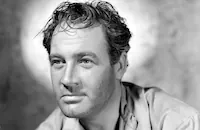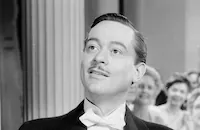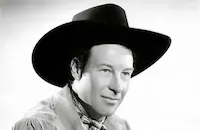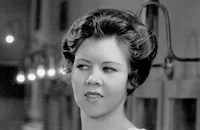The Girl from 10th Avenue

Brief Synopsis
Cast & Crew
Alfred E. Green
Bette Davis
Ian Hunter
Colin Clive
Alison Skipworth
John Eldredge
Film Details
Technical Specs

Synopsis
New Yorker Geoffrey Sherwood is jilted by Valentine French, the woman he loves, in favor of a wealthier man, Marland. Drunk, he watches the wedding from outside the church, and as he becomes increasingly louder, Miriam Brady, a shopgirl on her lunch hour, overhears two policemen plan to arrest him. To prevent that, she guides Geoff to a cafe, where Hugh Brown and Tony Hewlitt, two of his society friends, discover them. They offer Miriam one hundred dollars to stay with Geoff and keep him out of trouble. The next morning, Geoff and Miriam are still together, having married while both were under the influence of alcohol. Miriam is ready to give Geoff his freedom immediately, but he decides to stay with her. They rent an apartment in an unfashionable neighborhood, and while Geoff starts his own business, Miriam tries to better herself with the help of her landlady, Mrs. Martin, a former Floradora girl. Miriam helps Geoff to stay sober and things are good between them until Valentine, unhappy with her own marriage, decides she wants him back. Miriam confronts Valentine in a restaurant and the resulting quarrel makes the papers. Geoff blames Miriam and is about to leave her, but she goes first. Realizing that he really loves Miriam, Geoff breaks totally with Valentine and gives Miriam a real wedding ring.

Director
Alfred E. Green
Cast

Bette Davis

Ian Hunter

Colin Clive

Alison Skipworth

John Eldredge

Phillip Reed

Katharine Alexander
Helen Jerome Eddy

Gordon Elliott

Edward Mcwade
Adrian Rosley
Andre Cheron
James Donlan
Davison Clark
Matty King
Heinie Conklin
John Quillan
Jack H. Richardson
Edgar Norton
Vesey O'davoren
Charles Fallon

Bess Flowers
Jack Hatfield
Dick Winslow
Bruce Warren
Jack Norton
Sam Ash

Mary Treen
Crew

Film Details
Technical Specs

Articles
The Girl from 10th Avenue
By the time First National revisited the story in 1935, the struggle to give it a new title appropriate to modern audiences ran through such other options as Man on Her Mind. The final title indicates the appeal of the story, which was tailor made for the tastes of audiences as it charts the impulsive drunken marriage between lower class Miriam (Bette Davis) and wealthy Geoffrey Sherwood (Ian Hunter), who's despondent over being rejected for another man by his fiancée, Valentine (Katharine Alexander). Romantic entanglements ensue as Geoffrey immediately doubts his marriage vows, which are tested further when Valentine indicates she might have made a serious mistake. Can Miriam hang on to happiness, or is she destined to go back to her humble origins again?
Bette Davis had only been in Hollywood for five years when she made this film, one of five in which she starred in 1935. She had recently scored a five-year contract with Warner Bros. and was hot off her landmark role in Of Human Bondage (1934), and this particular role was overshadowed by her Oscar®-winning turn shortly afterwards in Dangerous (1935). Her career at the studio was a constant source of frustration as they refused to loan her out for key parts, leading to a much-publicized legal case the following year which she lost.
Davis's director on both this film and Dangerous, Alfred E. Green, had worked with her on another 1934 film, Housewife, which Davis was famously forced to shoot after the studio blocked her from going to Columbia to make It Happened One Night. An extremely fast and productive director, Green had been Mary Pickford's helmer of choice on several films and would remain much in demand for the remainder of the '30s.
Adaptation duties were handed to Charles Kenyon, who was also entrusted with the same year's lavish production of A Midsummer Night's Dream, also featuring Hunter, and would also write another Davis film the following year, The Petrified Forest, one of her early career highlights.
The cast is also loaded with some familiar character actors, and horror fans will certainly recognize third-billed Colin Clive, who portrayed the titular doctor in Frankenstein (1931). He was a very busy man while he made this film, which was bookended the same year with leading roles in two major classics, The Bride of Frankenstein and Mad Love. Tragically, the actor's chronic alcoholism would contribute to his death from tuberculosis two years later at the age of 37.
Other cast members recognizable to regular TCM viewers include Phillip Reed, who would shortly appear as Uncas in the 1936 version of The Last of the Mohicans and two additional cast members from Dangerous, John Eldredge, who would go on to play Lon in High Sierra (1941), and scene stealer Alison Skipworth, who was seen opposite Davis again in Satan Met a Lady (1936). Considering the amount of overlap both in front of and behind the camera, try watching this film on your own custom double bill with Dangerous to see just how much mileage Hollywood could get out of its talent in a mere matter of months.
By Nathaniel Thompson

The Girl from 10th Avenue
Quotes
Trivia
The original play opened in New York on 2 November 1914.
Notes
The working title of the film was Men on Her Mind, which was also the British release title. According to a news item in Daily Variety, Genevieve Tobin left the film because she thought that she as unsuited for the role of Valentine. Katherine Alexander replaced her. Davies' play was first filmed by Empire All-Star in 1917 and starred Miriam Gibson and David Powell under the direction of Del Henderson (see AFI Catalog of Feature Films, 1911-20; F1.3309). Powell again played the lead in a l922 version released by Paramount Pictures, which featured Elsie Ferguson, the star of the 1914 Broadway production, and was directed by Chet Whitney. In 1928, First National released another version with a Vitaphone score and sound effects, directed by William A. Seiter and starring Corinne Griffith and Edmund Lowe (see AFI Catalog of Feature Films 1921-30; F 2. 4072, F2.4073).















